Find Help
More Items From Ergsy search
-
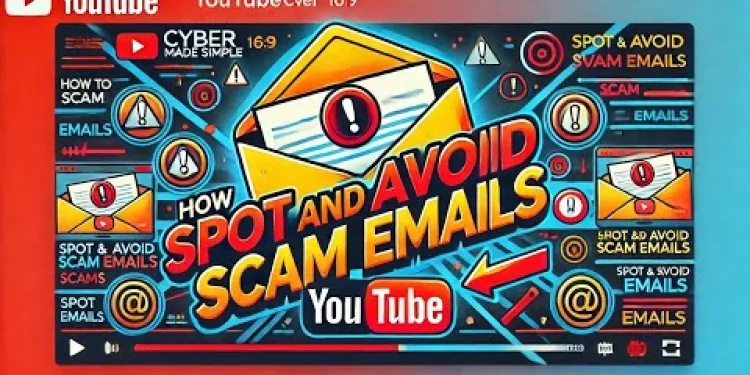
Don't Click On That Email (SPAM & SCAMS)
Relevance: 100%
-

Why does my email appear to be sending spam?
Relevance: 72%
-

Are unsolicited emails about weight loss drugs a warning sign?
Relevance: 53%
-

What are phishing scams?
Relevance: 46%
-
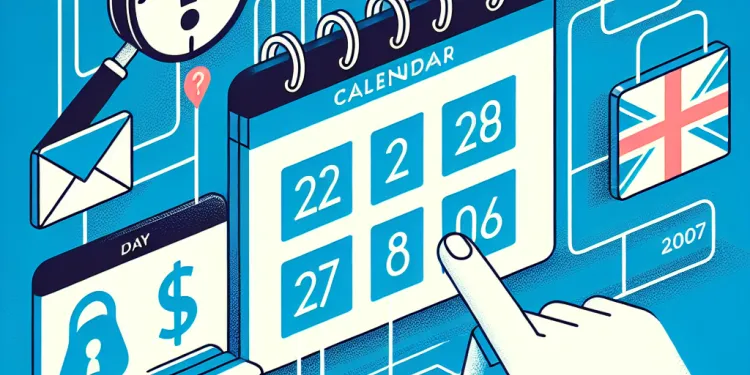
Can unexpected calendar events be a sign of a hacked email?
Relevance: 45%
-

What is the IRS scam?
Relevance: 45%
-
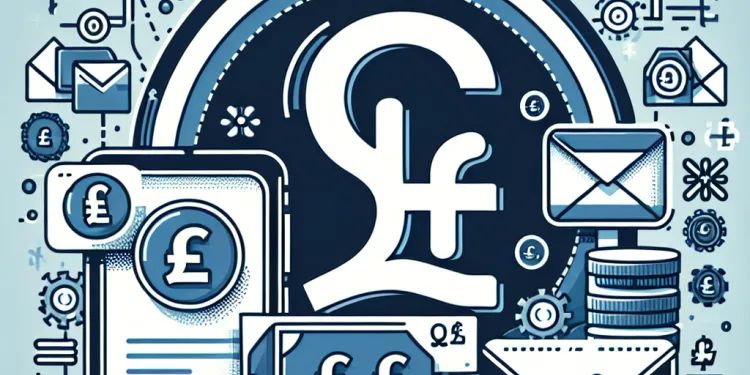
Why am I not receiving expected emails?
Relevance: 44%
-
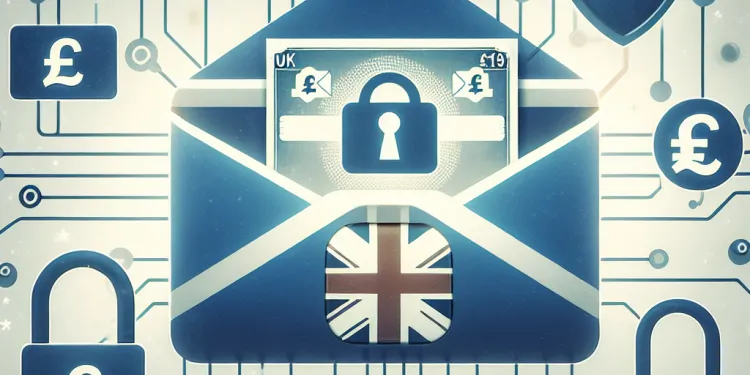
What signs indicate that my email filters may have been tampered with?
Relevance: 43%
-
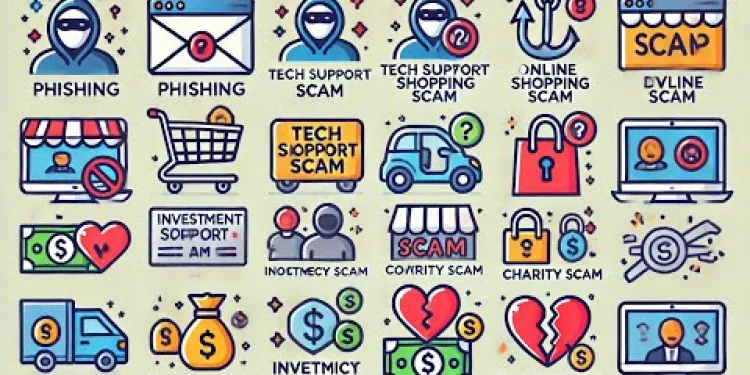
Don't Fall for These 7 Cybersecurity Scams!
Relevance: 43%
-
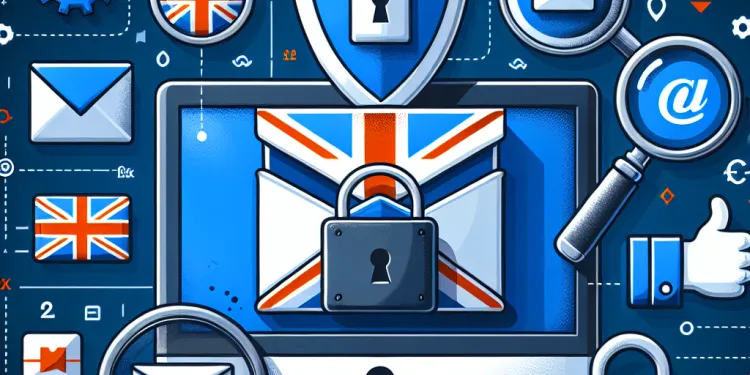
What are some signs that my email might be hacked?
Relevance: 41%
-
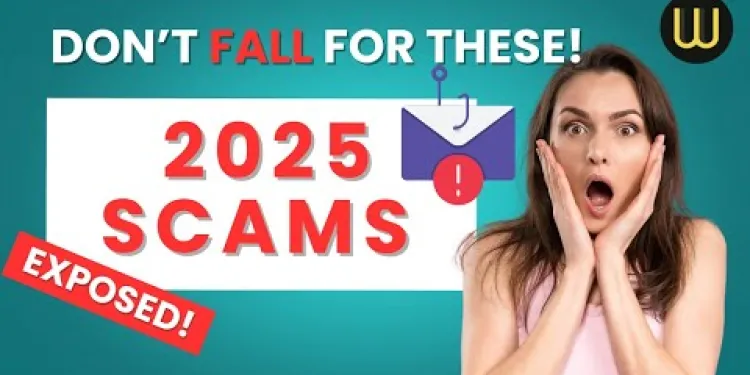
Common Scams to Avoid in 2025 (And How to Outsmart Them!) | Stay Safe Online
Relevance: 40%
-

How do charity scams exploit the elderly?
Relevance: 40%
-

Phishing Scams EXPOSED Don't Fall Victim to These Tricks!
Relevance: 40%
-
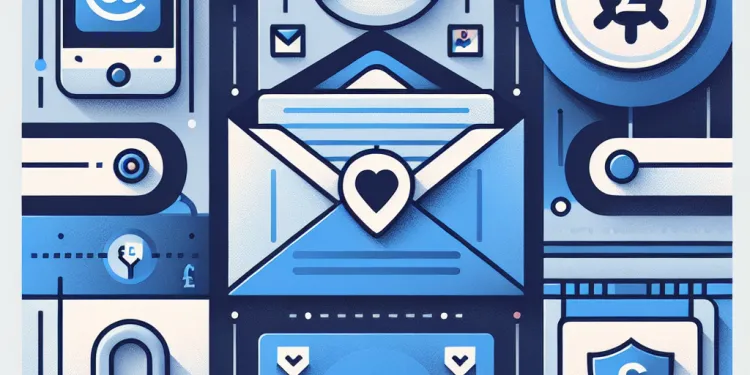
How do I know if my email has been hacked?
Relevance: 40%
-
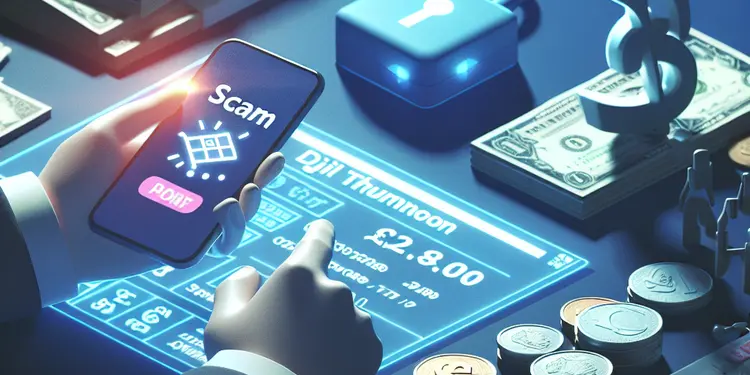
How can I recognize a scam?
Relevance: 39%
-
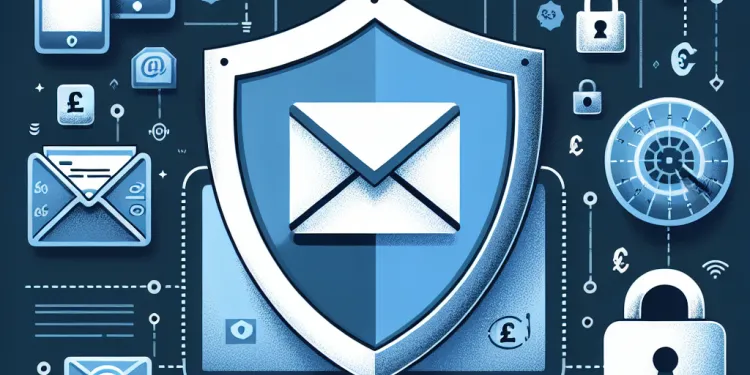
What is the risk of my contacts being compromised if my email is hacked?
Relevance: 39%
-

Scams of 2024/2025 ? (Be Aware)
Relevance: 38%
-

How can the elderly protect themselves from scams?
Relevance: 38%
-

What is a grandparent scam?
Relevance: 38%
-

Information on scams and fraud that targets the elderly.
Relevance: 37%
-
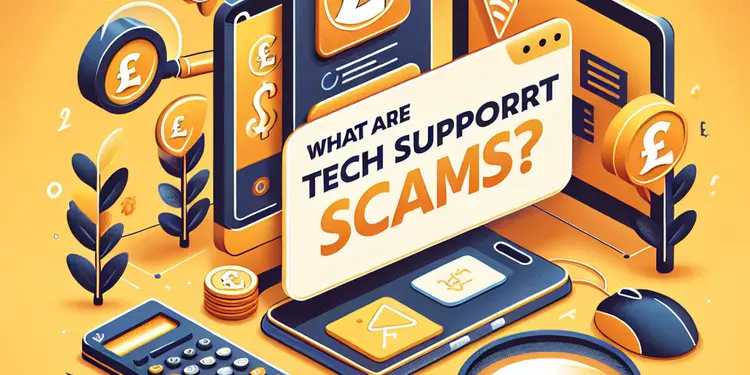
What are tech support scams?
Relevance: 37%
-

How does a lottery or sweepstakes scam work?
Relevance: 37%
-

What steps can I take to help an elderly loved one avoid scams?
Relevance: 36%
-

Common Scams to Avoid in 2025 (And How to Outsmart Them!) | Stay Safe Online
Relevance: 36%
-

Is the Postcode Lottery a scam?
Relevance: 35%
-
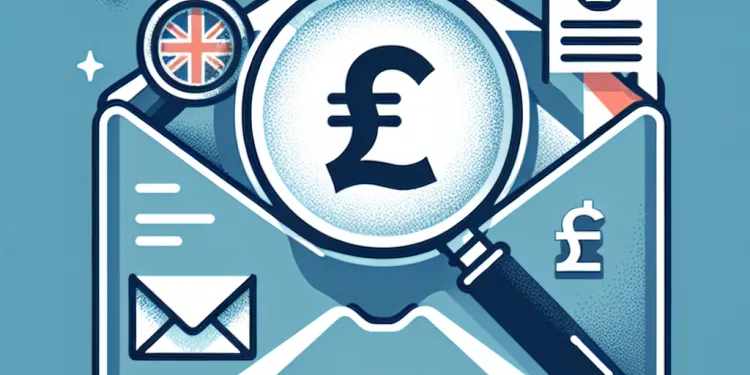
What should I do if I notice unfamiliar emails in my sent folder?
Relevance: 35%
-

Will HMRC contact me via phone or email regarding my tax refund?
Relevance: 35%
-

What are investment scams?
Relevance: 34%
-
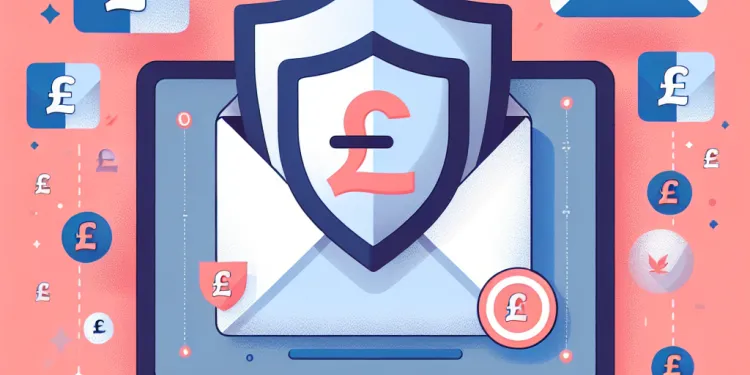
Can antivirus software protect my email from being hacked?
Relevance: 34%
-
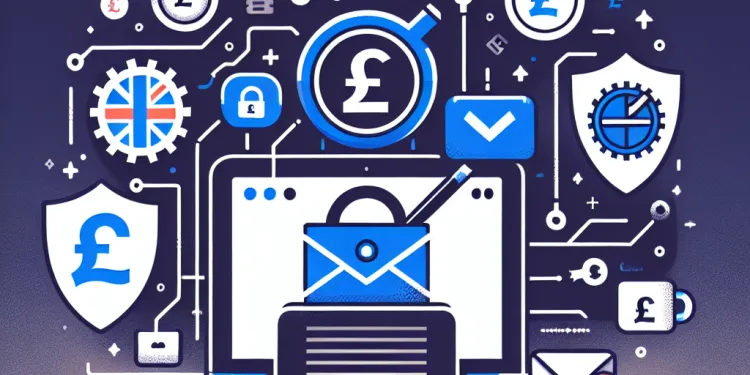
How can I recover a hacked email account?
Relevance: 33%
-
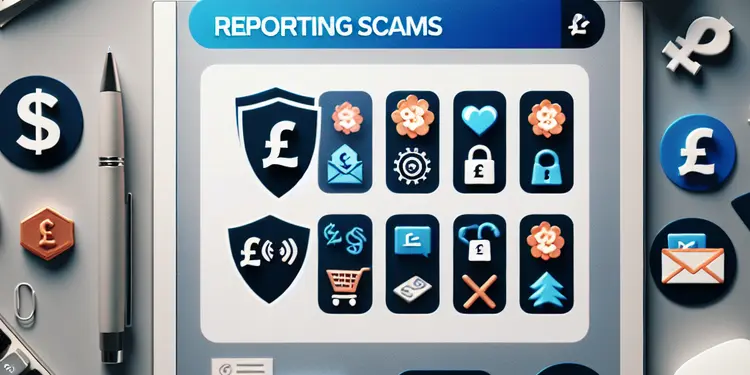
How important is it to report a scam?
Relevance: 33%
-

Can I get updates on my immigration status via email?
Relevance: 33%
-

Why am I receiving password reset emails I didn't request?
Relevance: 32%
-

Why are emails often targeted in data breaches?
Relevance: 32%
-

UK Banks Strengthen Security Measures Amid Rise in Online Scams
Relevance: 31%
-
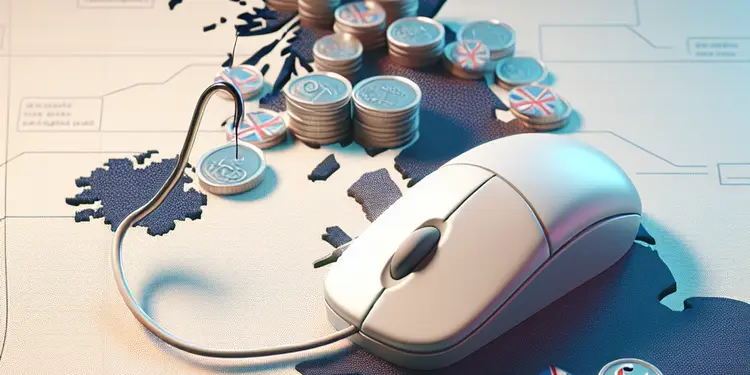
What is a phishing scam?
Relevance: 31%
-
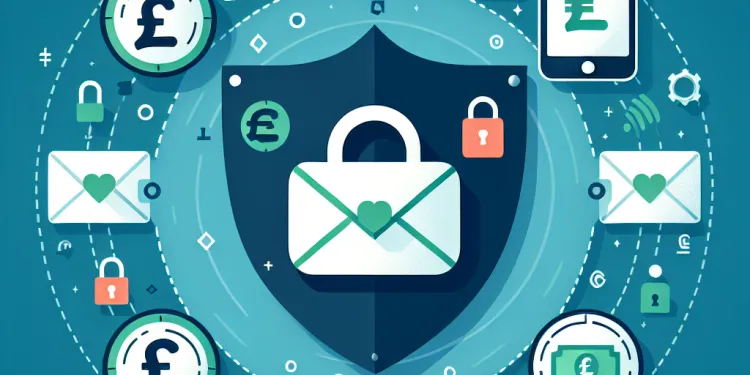
How can I secure my email after a hack?
Relevance: 31%
-
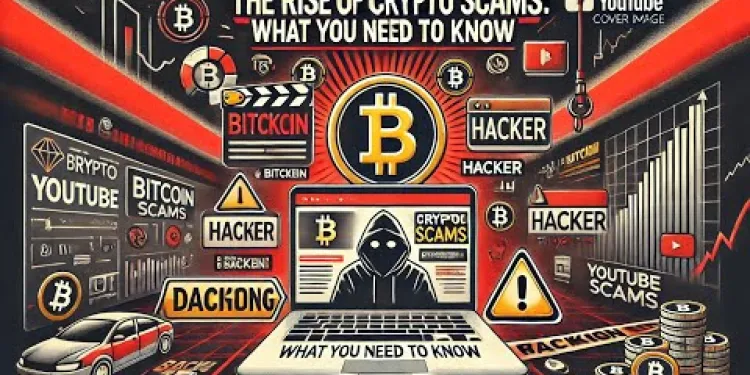
Crypto Scams Exposed - Protect Your Investments Now!
Relevance: 30%
-
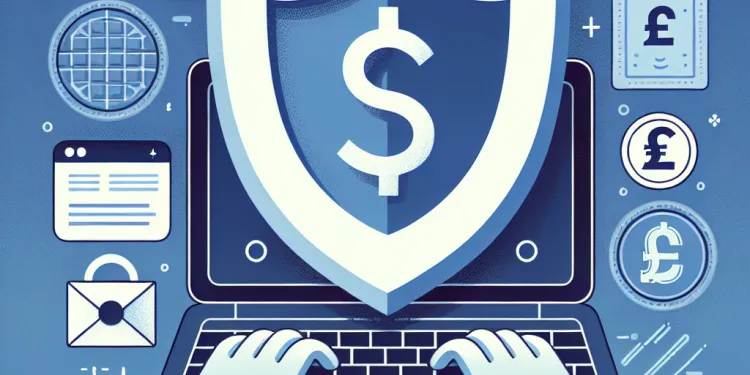
What preventive measures can I take to protect my email from being hacked?
Relevance: 30%
-
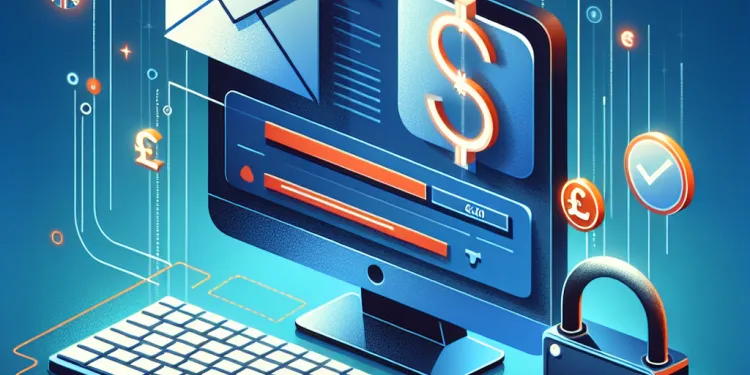
What should I do if I can't access my email account?
Relevance: 30%
Don't Click On That Email: SPAM & SCAMS in the UK
Understanding the Threats
In today's digital age, email remains one of the most efficient communication tools. However, it’s also a popular method for cybercriminals to target unsuspecting users. In the United Kingdom, millions of spam and scam emails are sent daily, tricking individuals into divulging personal information or financial details. Understanding these threats is crucial in protecting yourself online.
Recognising Spam and Scam Emails
Spam emails typically consist of unsolicited messages sent in bulk, often for advertising purposes. They can clutter your inbox and may sometimes hide malicious content. Scam emails, on the other hand, are more dangerous as they attempt to deceive users into clicking harmful links or downloading dangerous attachments. Common types of scams include phishing, where the email appears to be from a trusted source like a bank, and asks for personal information.
How to Protect Yourself
Firstly, always be suspicious of emails from unknown senders or those that offer deals that seem too good to be true. Check the email address carefully, as scammers often use legitimate-looking addresses. Avoid clicking on links or downloading attachments unless you are sure of the sender’s authenticity. Most email providers in the UK offer spam filters; ensure yours is activated and updated regularly.
Reporting and Responding to Spam
It's important to report any suspicious emails to your email provider and to organisations dedicated to fighting cybercrime, such as Action Fraud in the UK. Responding quickly to potential threats can help protect not only yourself but others from falling victim to scams. Additionally, staying informed about the latest types of scams through reputable news sources can enhance your vigilance.
Conclusion
Awareness and caution are your best defenses against spam and scam emails. By educating yourself on identifying threats and taking proactive measures to secure your digital space, you can significantly reduce the risk of falling victim to cybercrime. Remember, when in doubt, don't click on that email.
Don't Click On That Email: Understanding SPAM & SCAMS
In today's digital age, the threat of spam and scam emails is pervasive. These emails are designed to deceive and exploit innocent users, making it crucial for everyone, including residents of the United Kingdom, to stay informed and vigilant. Understanding how these scams work is the first step towards protecting yourself.
Recognising SPAM Emails
SPAM emails are unsolicited messages that clutter inboxes with unwanted advertisements, often promoting dubious products or services. Common signs of SPAM include generic greetings, offers that seem too good to be true, and urgent calls to action. Legitimate companies usually personalize their communication and allow you to unsubscribe from these mailings. Be cautious of unknown senders and avoid opening attachments or clicking on links within suspicious emails.
Identifying Email Scams
Scam emails are more malicious and can lead to serious consequences, such as identity theft or financial loss. These emails often mimic legitimate organisations like banks, the NHS, or government departments to gain your trust. They typically request sensitive personal information, like passwords or bank details, under various pretences. It's important to verify the authenticity of such emails by checking the sender's address, looking for grammatical errors, and contacting the organisation in question directly using official contact details found on its official website.
Protecting Yourself from Email Threats
The best protection against email scams is scepticism combined with proactive measures. Use security software to help filter out SPAM and phishing attempts and ensure it's regularly updated. Educate yourself and others by staying informed about new phishing techniques. Always double-check URLs in email links before clicking, and don’t be rushed by time-sensitive requests. Being cautious and informed significantly reduces the risk of falling victim to email scams.
Reporting Suspicious Emails
Residents in the United Kingdom can forward phishing emails to the National Cyber Security Centre (NCSC) at report@phishing.gov.uk. By reporting, you help authorities track and mitigate these threats. It's a contribution towards creating a safer online community for everyone.
In conclusion, staying alert and informed are your best defences against SPAM and scams. Protect your personal information and share this knowledge with peers to collectively combat these digital menaces.
Don't Click On That Email: Protecting Yourself from SPAM & SCAMS
Understanding the Threat
In today's digital age, email has become an indispensable tool for communication. However, it has also become a breeding ground for spam and scams. In the United Kingdom, individuals and businesses alike are constantly targeted by unsolicited emails that can lead to financial loss and identity theft. Understanding how these threats operate is crucial to protect oneself effectively.
Recognising Suspicious Emails
Recognising the signs of a suspicious email is the first step towards safeguarding your personal information. Scammers often disguise their emails to look like they are from legitimate organisations, such as banks or well-known companies. Pay attention to the sender's email address, grammatical errors, and urgent calls for immediate action - all are common indicators of a potential scam.
What to Do When You Receive a Suspicious Email
When you receive an email that seems off, do not click on any links or download attachments. Instead, verify the authenticity by directly contacting the organisation the email claims to come from, using their official contact details. Report the email to your IT department if you are at work or use the email provider's feature to mark it as spam. Awareness and caution can prevent major security breaches.
Protective Measures
Implementing layered security measures is key to preventing spam and scams. Use comprehensive antivirus software and enable email filters to reduce spam. Regularly update all devices to patch vulnerabilities. Educating yourself and others about the threat of email scams in the UK can build a more resilient digital environment.
Conclusion
Email scams are an ever-present threat, but with vigilance and smart practices, their impact can be mitigated. Stay informed, be cautious, and always double-check before clicking on that email. Together, we can reduce the risks posed by online fraudsters.
Don't Click On That Email: Spam and Scams in the UK
Understanding the Dangers
Today, many people use email to talk to each other. It is fast and easy. But some bad people use email to trick others. In the UK, many fake emails are sent every day. These fake emails try to steal personal or money information. It is important to know about these dangers to keep yourself safe online.
Spotting Bad Emails
Spam emails are unwanted emails that fill up your inbox. They often try to sell things. Some might have hidden dangers. Scam emails are more dangerous. They try to trick you into clicking bad links or opening harmful files. A common trick is called phishing. Here, the email looks like it's from a bank and asks for your personal details.
How to Stay Safe
Be careful with emails from people you don't know. If an offer in an email looks too good, it might be a trick. Always look closely at the email address. Bad people might use addresses that look real. Do not click on links or open files unless you know the sender is real. In the UK, many email services have spam filters. Make sure yours is on and updated.
What to Do About Suspicious Emails
If you get a suspicious email, tell your email service. You can also tell groups that fight online crime, like Action Fraud in the UK. Acting quickly can keep you and others safe. Also, read news from trusted sources to learn about new types of scams. This will help you stay alert.
Conclusion
Knowing and being careful is the best way to stay safe from bad emails. Learn how to spot the dangers and protect your online world. This way, you can lower the chance of getting tricked. Remember, if you're unsure, don't click on that email.
Don't Open That Email: Learn About Spam and Scams
Today, we use the internet a lot, and some emails can be tricky. Some emails are called spam or scams and can trick you. They can cheat people out of money. It is important to know how these emails work so you can stay safe.
How to Spot SPAM Emails
SPAM emails are unwanted messages that flood your inbox. They try to sell you things you might not need. Look out for emails that have these signs: they use general greetings like "Dear Friend," promise things that seem too good to be true, or tell you to act fast. Real companies usually know your name and let you choose if you want to get emails. Be careful with unknown senders, and don't open attachments or click links in these strange emails.
How to Spot Scam Emails
Scam emails are more harmful. They can steal your identity or money. These emails pretend to be from real places like banks or the NHS. Scammers want your personal information like passwords or bank details. To check if an email is real, look at the sender's email address, see if the email has spelling mistakes, and call the real company using a phone number from their official website.
Stay Safe from Email Dangers
To keep safe from scams, be careful and take action. Use security tools that block SPAM and scams and keep them updated. Learn about new email tricks. Always check links in emails before you click them, and don't hurry because an email asks you to. Being careful helps keep you safe from scams.
Tell Someone About Bad Emails
If you see a bad email in the UK, you can send it to the National Cyber Security Centre (NCSC) at report@phishing.gov.uk. When you report these emails, you help make the internet safer for everyone.
In summary, being careful and learning about email tricks protects you from spam and scams. Keep your personal details safe and tell others so everyone can stay protected.
Don't Click On That Email: Keeping Safe from SPAM & SCAMS
What is the Problem?
Today, many people use email to talk to each other. But sometimes, bad people use emails to trick others. These emails can ask for your money or steal your information. It is important to know how these tricks work so you can stay safe.
How to Spot Bad Emails
To stay safe, you need to know when an email is bad. Bad emails can look like they are from your bank or big companies. Look at the email address. If it has mistakes or says you must do something quickly, it might be bad.
What to Do if You Get a Bad Email
If you get an email that looks wrong, do not click on anything. Do not open any files. Instead, you should call the real company the email says it is from. Use their phone number from their website. Tell your tech helper if you are at work. You can also mark the email as spam in your email account.
How to Stay Safe
Use many ways to keep safe from bad emails. Get good antivirus software to protect your computer. Use email filters to catch spam emails. Make sure your computer and devices have the latest updates. Learn more about email scams and teach others too. This way, everyone can be safer online.
Final Thoughts
Bad emails are a big problem, but you can stop them from hurting you. Learn what to look for, be careful, and always check before you click on emails. Working together, we can protect ourselves from online scams.
Frequently Asked Questions
What is spam email?
Spam email is unsolicited and often irrelevant or inappropriate email messages sent in bulk to a large number of recipients. These are typically used for advertising or spreading malicious content, commonly without the recipients' consent.
How can I identify a phishing scam?
Phishing scams often masquerade as trusted entities, asking you to verify personal information or login credentials. Look for unusual email addresses, generic greetings, and urgent or threatening language.
Why should I avoid clicking on links in suspicious emails?
Clicking on links in suspicious emails may direct you to fraudulent websites designed to steal your personal information or install malware on your computer.
What are common signs of a scam email?
Common signs include poor spelling and grammar, requests for personal information, unexpected attachments, or offers that seem too good to be true.
How do scammers obtain my email address?
Scammers can obtain your email address through data breaches, buying lists from shady sources, or harvesting them from public websites and social media.
Is it safe to open an email from an unknown sender?
Opening an email from an unknown sender can be risky if it contains malicious attachments or links. It's safer to delete such emails unless you're expecting contact.
What should I do if I suspect an email is a scam?
If you suspect an email is a scam, do not click any links or attachments. Mark it as spam or phishing in your email client, and delete it immediately.
Can spam emails infect my computer?
Yes, if you download attachments or click on malicious links, spam emails can infect your computer with viruses, malware, or spyware.
Why do some emails go to my spam folder?
Email providers use algorithms and filters to detect spam based on certain criteria, such as suspicious links or known spammed addresses, and automatically move them to your spam folder.
How can I protect myself from email scams?
Use a strong antivirus program, enable spam filters, be cautious with unsolicited messages, and never share your personal information unless you're sure of the recipient's legitimacy.
Can I report scam emails in the UK?
Yes, you can report scam emails to the National Cyber Security Centre by forwarding them to report@phishing.gov.uk.
What should I do if I clicked on a phishing link?
Immediately disconnect from the internet, run a full virus scan, change passwords (starting with sensitive accounts), and monitor your financial statements for unusual activity.
How do scam emails affect businesses?
Scam emails can lead to data breaches, financial loss, and reputational damage. Phishing attacks can also compromise business accounts and information.
Why do scammers use email instead of other methods?
Email is cost-effective, allows for mass distribution, and can reach global audiences. It also enables scammers to disguise their true identity easily.
How can I educate others about email scams?
Share information about recognising scams, update them on current threats, encourage best practices like strong passwords, and promote caution with unsolicited emails.
What is spam email?
Spam email is junk mail. It is email you do not want. It can be ads or scams. It fills your inbox with unwanted messages.
Tips to deal with spam:
- Do not open spam emails.
- Use a spam filter to block junk mail.
- Do not click on links in spam emails.
- Delete spam to keep your inbox safe.
Spam emails are unwanted messages sent to lots of people. These emails can be annoying and not useful. People send spam emails to advertise things or to spread harmful content. They often send these emails without asking if it's okay.
How can I spot a phishing scam?
A phishing scam is when someone tries to trick you to get your information, like passwords or bank details.
Here are some tips to help:
- Check the sender's email address. Does it look real?
- Be careful if the message asks for personal info.
- Look for spelling mistakes in the message.
- If a message says "Urgent!" or "Act now!", be careful. It might be fake.
- Hover over links to see where they go before clicking.
If you're not sure, ask a trusted friend or an adult to help.
Phishing scams try to trick you. They pretend to be from people you trust. They might ask you to check your personal info or password. Watch out for weird email addresses, greetings that don't use your name, and messages that say you must do something quickly or else!
Here are some ways to stay safe:
- Always check who sent the email.
- If the email feels rushed or scary, be careful.
- Use a password manager to help keep track of your passwords.
- Ask someone you trust if you’re unsure about an email.
Why should I not click on links in strange emails?
It is important to be careful when clicking on links in emails that look strange or suspicious. Here is why:
- Keep your computer safe: Bad links can have viruses. Viruses can hurt your computer.
- Protect your information: Some bad links try to steal your personal information. This is called "phishing."
- Stay away from scams: Scammers might try to trick you with fake offers or prizes if you click the link.
If you do not know or trust the person who sent the email, it is best not to click on any links.
You can use tools like anti-virus software to help keep your computer safe.
When you click on links in strange emails, they might take you to fake websites. These websites can try to steal your personal information or put bad programs on your computer.
What are common signs of a scam email?
Scam emails try to trick you. Here are some signs to watch for:
- Strange Address: The email address looks weird or different.
- Urgent Message: The email says it's very urgent or gives you pressure to act fast.
- Spelling Mistakes: There are lots of spelling or grammar mistakes.
- Suspicious Links: The links in the email look strange. Don't click them!
- Too Good to be True: If it sounds too good to be true, it might be a trick.
If an email looks like a scam, do not click any links or give personal information.
Tools you can use:
- Use spam filters to keep bad emails away.
- Check with someone you trust if you are unsure about an email.
- Keep your security software updated on your computer.
Watch out for these signs:
- Spelling or grammar mistakes.
- Asking for your personal details.
- Attachments you didn’t expect.
- Offers that look too good to be true.
Here are some tools and tips to help you:
- Use spell checkers to spot mistakes.
- Ask a friend to help you double-check.
- Look up anything that feels strange.
How do bad people get my email address?
Bad people might use tricks to find out your email address. Here is how they might do it:
- Buying lists: Sometimes, bad people buy lists of emails from others.
- Guessing: They might try to guess your email by using common names.
- Hacking: Sometimes, they hack into websites to steal email addresses.
- Social media: They might find your email on your social media pages.
To keep your email safe, you can do these things:
- Do not share your email with people you don't know.
- Use different passwords for different websites.
- Be careful about where you put your email online.
Bad people can get your email address in different ways. They can find it if a website you use gets hacked. They might buy it from other bad people. Or they can look for it on public websites and social media.
If reading is hard, you can use tools like text-to-speech to read it out loud, or apps with pictures that help explain the words.
Is it OK to open an email from someone I don't know?
Getting an email from someone you don't know can be risky. It might have harmful files or links. It is best to delete these emails unless you know they are coming.
What to do if you think an email is a trick
If you get an email that seems bad or tricky, don't worry! Here are some steps to help you:
- Stop and think: Does the email look strange or unexpected?
- Do not click: Don't click on any links or open any files in the email.
- Check the sender: Look at who sent the email. Is it someone you know?
- Ask for help: Tell a trusted adult. They can help you decide what to do.
- Use tools: Use tools like spam filters to stop bad emails.
Remember, it's always okay to ask for help!
If you think an email might be a trick, do not click on any links or open any attachments. Mark it as spam or phishing in your email app, and delete it right away.
Can bad emails put a virus on my computer?
Yes, if you click on bad links or download files from spam emails, they can put bad programs on your computer. These bad programs might cause harm.
Why do some emails go to my spam folder?
Sometimes, emails end up in the spam folder because they look like junk or unwanted emails. Your email service does this to protect you from bad messages.
Here are some reasons why emails go to spam:
- The email is from someone you don't know.
- The email has too many links or pictures.
- The email uses words that might seem like trickery.
You can try these tips:
- Add friends and family to your contact list.
- Check your spam folder for emails you want, and mark them as "Not Spam".
- Use a tool or app that helps you manage emails better.
Email services use special tools to find spam. They look for things like strange links or addresses that send a lot of spam. If they find these, they put the emails in your spam folder.
How can I stay safe from tricky emails?
Use a good antivirus program. Turn on spam filters. Be careful with messages from people you don't know. Never share your personal information unless you are sure the person is safe.
Can I tell someone about scam emails in the UK?
Yes, you can tell someone about scam emails.
If you have an email that is a scam, you can send it to report@phishing.gov.uk.
This helps stop the scammers.
If you need help, you can ask a grown-up.
Yes, you can tell the National Cyber Security Centre about scam emails. Send them to report@phishing.gov.uk.
What should I do if I clicked on a trick link?
If you clicked on a trick link, don't worry. Here’s what you can do:
- Tell a grown-up or someone you trust.
- Check your computer or device with a security program. This helps find and fix any problems.
- Change your passwords to be safe. Make them strong and different for each account.
- If you shared any personal details, like your address, keep an eye on things in case you see anything strange.
Helpful tools can be:
- A security program to scan your device.
- Help from a parent or friend.
- Use a password manager to help you remember your new passwords.
It’s important to stay calm and take these steps to protect yourself.
First, turn off your internet. Next, use your computer's virus checker to look for bad programs. Then, change your passwords. Start with important ones, like for your online banking. After that, keep an eye on your bank accounts to make sure there's nothing strange happening.
It's helpful to use simple steps and checklists. Try a password manager to remember your passwords. Ask a friend or family member to help you if you need it.
How do fake emails hurt businesses?
Fake emails can be a big problem for businesses. They can trick people into giving away important information, like passwords or money.
Businesses can lose money because of fake emails. They may also lose important data that could hurt their work.
To stay safe, businesses can use special tools that spot fake emails. It's also good to teach workers how to spot a fake email.
Asking for help from experts can also be a good idea. They can give advice on how to keep the business safe.
Bad emails, called scam emails, are dangerous. They can steal important information and money. They can also hurt a person’s or a business's good name. Sneaky tricks, called phishing, can also break into business accounts and steal information.
Why do scammers send emails?
Email is cheap. You can send it to many people at once, anywhere in the world. But scammers can pretend to be someone else easily with email.
How can I teach others about email scams?
Email scams are tricks people use to try to steal your money or information. Here is how you can help others learn about them:
- Explain what email scams are: Tell them that email scams are fake emails that try to trick you.
- Show examples: Share stories or examples of scam emails with your friends or family.
- Teach them to be careful: Tell them not to click on links or open attachments from strangers.
- Use online tools: Suggest using tools like spam filters that help block scam emails.
- Ask questions: Encourage them to ask questions if they are unsure if an email is real or fake.
Let's talk about staying safe online. Here are some tips:
1. Learn how to spot tricks and scams. Scams are sneaky ways to steal your information. Be careful!
2. Know what the newest tricks are. This will help you stay one step ahead.
3. Use strong passwords. A strong password has letters, numbers, and symbols. This keeps your information safe.
4. Be careful with emails you did not ask for. If you get an email from someone you do not know, be extra careful before clicking on anything.
Use tools like password manager apps to help create and remember strong passwords. If something seems wrong, ask a trusted adult for help.
Useful Links
- Ergsy carfully checks the information in the videos we provide here.
- Videos shown by Youtube after a video has completed, have NOT been reviewed by ERGSY.
- To view, click the arrow in centre of video.
- Most of the videos you find here will have subtitles and/or closed captions available.
- You may need to turn these on, and choose your preferred language.
- Go to the video you'd like to watch.
- If closed captions (CC) are available, settings will be visible on the bottom right of the video player.
- To turn on Captions, click settings .
- To turn off Captions, click settings again.
More Items From Ergsy search
-

Don't Click On That Email (SPAM & SCAMS)
Relevance: 100%
-

Why does my email appear to be sending spam?
Relevance: 72%
-

Are unsolicited emails about weight loss drugs a warning sign?
Relevance: 53%
-

What are phishing scams?
Relevance: 46%
-

Can unexpected calendar events be a sign of a hacked email?
Relevance: 45%
-

What is the IRS scam?
Relevance: 45%
-

Why am I not receiving expected emails?
Relevance: 44%
-

What signs indicate that my email filters may have been tampered with?
Relevance: 43%
-

Don't Fall for These 7 Cybersecurity Scams!
Relevance: 43%
-

What are some signs that my email might be hacked?
Relevance: 41%
-

Common Scams to Avoid in 2025 (And How to Outsmart Them!) | Stay Safe Online
Relevance: 40%
-

How do charity scams exploit the elderly?
Relevance: 40%
-

Phishing Scams EXPOSED Don't Fall Victim to These Tricks!
Relevance: 40%
-

How do I know if my email has been hacked?
Relevance: 40%
-

How can I recognize a scam?
Relevance: 39%
-

What is the risk of my contacts being compromised if my email is hacked?
Relevance: 39%
-

Scams of 2024/2025 ? (Be Aware)
Relevance: 38%
-

How can the elderly protect themselves from scams?
Relevance: 38%
-

What is a grandparent scam?
Relevance: 38%
-

Information on scams and fraud that targets the elderly.
Relevance: 37%
-

What are tech support scams?
Relevance: 37%
-

How does a lottery or sweepstakes scam work?
Relevance: 37%
-

What steps can I take to help an elderly loved one avoid scams?
Relevance: 36%
-

Common Scams to Avoid in 2025 (And How to Outsmart Them!) | Stay Safe Online
Relevance: 36%
-

Is the Postcode Lottery a scam?
Relevance: 35%
-

What should I do if I notice unfamiliar emails in my sent folder?
Relevance: 35%
-

Will HMRC contact me via phone or email regarding my tax refund?
Relevance: 35%
-

What are investment scams?
Relevance: 34%
-

Can antivirus software protect my email from being hacked?
Relevance: 34%
-

How can I recover a hacked email account?
Relevance: 33%
-

How important is it to report a scam?
Relevance: 33%
-

Can I get updates on my immigration status via email?
Relevance: 33%
-

Why am I receiving password reset emails I didn't request?
Relevance: 32%
-

Why are emails often targeted in data breaches?
Relevance: 32%
-

UK Banks Strengthen Security Measures Amid Rise in Online Scams
Relevance: 31%
-

What is a phishing scam?
Relevance: 31%
-

How can I secure my email after a hack?
Relevance: 31%
-

Crypto Scams Exposed - Protect Your Investments Now!
Relevance: 30%
-

What preventive measures can I take to protect my email from being hacked?
Relevance: 30%
-

What should I do if I can't access my email account?
Relevance: 30%


